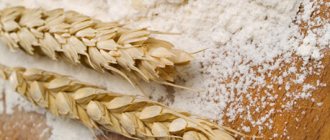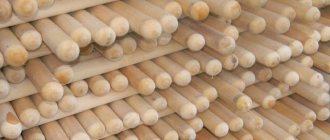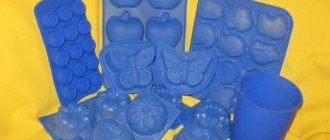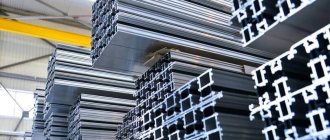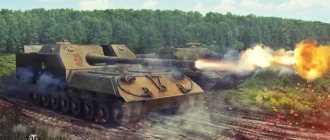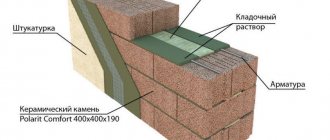If you have set your mind on creating your own business and are looking for a worthy offer, then we recommend that you pay attention to the sandwich panel business.
This building material appeared on the market quite recently, but has already become widespread among large construction companies, state enterprises, as well as various companies for the construction of industrial space. It is profitable to produce this material both in large cities where construction is constantly underway, and in small regional centers, due to the high demand for panels. That is why we suggest you familiarize yourself with sandwich panels, their advantages and production technology.
What are sandwich panels?
Sandwich panels are a modern building material that is loved by builders for its quick installation and versatility. A three-layer structure, of which two layers make up the outer shell, and the inner layer is the insulation and gives the name to this material. Various panels made of wood boards or profiled metal can be used as a shell. The role of insulation is performed by mineral wool, polystyrene foam or polyurethane foam. All layers are glued together using one or two-component glue.
The panels can be used as an independent building material for the construction of boxes, change houses, hangars, warehouses and even country houses. The material is also suitable for installing floors indoors, for cladding and restoring building facades and walls. Any use that eliminates the load on the panel can be implemented in modern conditions.
Relevance and advantages of sandwich panels
Sandwich panel is a structure that consists of steel, aluminum or plasterboard sheathing. Inside there is a filler and a core. Its function is to insulate heat. The core is made of polyurethane, mineral wool, fiberglass. There are no joints between the panels - there are no seams, the connections are sealed.
The technical characteristics of the product depend on the materials of manufacture. This makes it possible to choose the type that is suitable for a specific climate and the specifics of the structure.
The sandwich is classified into two groups:
- roofing - mounted horizontally or at a slope;
- wall - they are installed vertically. The main requirement in this case is the ability to withstand high loads.
Sandwich panels are widely used in the construction industry due to their advantages:
- quick installation - the speed of construction work is reduced by saving time on foundation construction. For this material it should not be bulky;
- light weight - allows you to do without the use of special equipment. This saves motor resources and reduces construction costs;
- low price;
- aesthetics - modern appearance, the ability to choose colors;
- buildings built from panels do not require exterior finishing;
- mobility - delivery of material to the construction site requires 4-5 times less equipment than, for example, transporting bricks or concrete blocks. The building can be dismantled and moved to another location;
- low flammability;
- thermal conductivity - structures built from sandwiches reduce heating costs by 3 times;
- sound absorption;
- resistance to external aggressive influences;
- thin walls increase the usable area of the building;
- the material can be used for reconstruction - finishing will not cost much.
A building built from sandwich panels will last 40-50 years. By modern standards this is not much. But this compensates for the ability to partially replace damaged areas. The integrity of the structure is not compromised.
The disadvantages include:
- fragility - the product has a low strength coefficient;
- in case of temperature changes - frost or extreme heat, there is a risk of depressurization of the seams.
Application area:
- frame modules;
- garages;
- hangars;
- buildings for offices, business centers;
- household premises;
- kiosks;
- country houses;
- fences, fencing.
Types of sandwich panels
Based on their purpose, the panels are divided into:
- Roofing. To create, profiled metal is used; the profile can be used on one or both sides;
- Wall. This type of panel also has its own division; there are smooth panels with a simple profile and a decorative profile.
There is also a division of panels into groups based on material. There are metal panels coated with galvanized steel, sheets covered with plasterboard or various PVC boards are also separately distinguished, and the last group is panels consisting of wood material.
Equipment options
A sandwich panel consists of insulation placed between two rigid shells made of steel of various grades and thicknesses. There are several options for completing the line for assembling sandwich panels, but there are only two directions of production - economical and with maximum equipment. These lines differ in the production of finished products and the speed at which this happens.
The line is standard . Produces from 120 to 240 panels in 8 hours depending on the thickness of the product. The size of one panel is 3000x1500 mm. Their thickness can be 10, 24, 32 mm. Such a line is assembled in 20-25 working days. Depending on the form of the contract with the manufacturer, you can pay immediately for delivery, assembly, and further maintenance of the line. The average cost of equipment is as follows:
- machine for cutting foam plastic boards - 165 thousand rubles;
- milling machine for working on foam plastic boards – 64 thousand rubles;
- vacuum cleaner for a milling machine – 30 thousand rubles;
- machine for applying glue to foam plastic – 6 thousand rubles;
- press for assembling parts of a sandwich plate - from 77 to 154 thousand rubles. depending on the power of the device.
PVC panels can also be produced independently in your own workshop, but then you will have to buy an additional machine for 20 thousand rubles.
Fully automated line with the function of producing PVC plates and automatic gluing of parts. The capacity of this production is 120 panels with a thickness of 10 mm and dimensions of 3000x1500 mm. It is possible to produce slabs with a thickness of 10, 24, 32, 64 mm. The entire line is assembled in 40 working days. It includes:
- machine for cutting foam plastic boards – 165 thousand rubles;
- milling machine for working on foam plastic boards – 64 thousand rubles;
- a combined machine with the function of applying glue and pressing finished slabs - 409 thousand rubles.
You will also need your own device for the production of PVC boards costing 20 thousand rubles.
Before purchasing a set of equipment for the production of sandwich panels, you need to understand that there are several types of the final product and they differ in the type of thermal insulation and cladding, purpose criteria, and a number of design features. Based on this, the line may have design and, accordingly, price differences. To decide on the required equipment, you should clearly understand for what purposes the products will be produced.
According to their purpose, sandwich panels are divided into wall and roof panels. In the first case, the panels are strong enough to be used to make up the walls of warehouses and other premises, to make industrial refrigeration chambers and even housing.
Ceiling sandwich panels are distinguished by the lightness and strength of the materials from which they are made. This is both a more heat-resistant insulation and durable metal sheathing. This is due to the fact that the roof undergoes constant loads associated with weather conditions - snow, rain, hurricane winds.
There is a difference between sandwich panels based on the type of heat insulator. For example, mineral wool, fiberglass, polyurethane foam, polystyrene foam, as well as combined insulation materials, including several types of material, are used.
Each of the listed insulation materials has its own positive and negative sides. For example, mineral wool is fire resistant, but extremely sensitive to moisture. Fiberglass is light and non-flammable, but can cake, losing up to 25% in volume. Polyurethane foam is the most optimal filler, as it has virtually no negative sides. It is light, strong, durable, environmentally friendly, does not decompose and does not cake over time. But it burns very well and is expensive to produce.
According to the type of cladding, sandwich panels are divided into metal, plasterboard, plywood, PVC, wood chips, cement-bonded and even paper.
The steel used for sandwich panels is thin-sheet, galvanized or stainless steel. In this case, the sheets can be flat or profiled. This is the most common type of sheathing as it is durable, lightweight and non-flammable.
As for other types of sheathing such as plasterboard, PVC, fiberboard, fiberboard and so on, they are usually installed only on one side, with ordinary sheet steel on the other. These combined sandwich panels are used to assemble living quarters, for example, modules for seasonal workers.
Advantages of this material
We wrote that the material is in considerable demand among builders due to its positive qualities. Among the main advantages of sandwich panels, the following are worth noting:
- Minimum construction time for buildings;
- Construction can take place all year round, even in sub-zero temperatures;
- Outstanding heat/sound insulation properties;
- Full compliance with environmental standards;
- The lightness of the material, which means it is easy to work with and reduces the load on the foundation;
- The panels are easy to transport;
- Prevents the development of mold or fungi;
- You can select panels that exclude further finishing;
- Possibility of using the material in medical institutions and in the food industry;
- Low cost.
Raw materials for the production of sandwich panels
Another advantage of the sandwich panel manufacturing business is the fact that you do not need a long list of materials. For production you will need insulation, sheet material for the outer layer and glue - that’s all. Of course, you can go further and set up your own production of panels and insulation, but this approach can be too expensive.
To better understand the features of the material, you should consider separately all its components:
1. Insulation. Basalt fiber (mineral wool) is one of the most popular fillers. This type of wool perfectly insulates a room, provides good sound insulation, the material itself does not contain toxic impurities and does not support open combustion;
2. Fiberglass is a competitor to mineral wool, which in some cases can reduce the cost of production. Does not absorb moisture and does not shrink, but is flammable;
3. Expanded polystyrene is a cheap and practical material. Resistant to biological agents, good insulation and an essential choice for storage and insulation applications. Among the disadvantages, it is worth highlighting its toxicity and tendency to burn;
4. Polyurethane foam is a more advanced version of the previous filler. It is characterized by high strength, outstanding thermal insulation, as well as noise and vibration insulation. Resistant to fire and mold or mildew;
5. Sheet covering:
— galvanized steel is a reliable and unpretentious material, the durability of which is determined by the zinc layer, as well as additional polymers or paints (if any are applied);
— aluzinc is an American alloy capable of maintaining its characteristics at temperatures above 300 degrees;
- plasterboard - the material is best suited for interior decoration or creating interior partitions or other structures that do not involve loads;
- plastic panels (polyester, pural, polydifluorionad, plastisol) - a universal material suitable for use both indoors and outdoors. It is resistant to moisture, ultraviolet radiation, low temperatures and mechanical stress;
- wood boards - consist mainly of chips, are suitable for working with facades and indoors, and provide additional insulation from moisture.
6. Glue. There are two main types of glue - one-component and two-component. The first is applicable exclusively in garage or small-scale production, as it requires a long time for the layers to harden and set. On an industrial scale, a two-component glue is used, which begins to act when its components are mixed. It is worth noting that the two-component glue sets very quickly, which is why the gluing process involves the work of several people simultaneously or with the help of machine equipment.
The type of glue depends on the type of insulation and external panels, therefore it is selected individually for each batch of product.
PVC sandwich panel - this is a 3-layer panel with PVC (polyvenyl chloride) linings and EPS filler (expanded polystyrene, polystyrene foam). They are often used in the finishing of commercial and industrial premises, so PVC sandwich panels are subject to fairly stringent requirements for appearance. The main parameter is the geometric accuracy of execution. Often one or two sides of a PVC sandwich panel are made from glossy PVC panels and any even the smallest distortions become visible. In this regard, it is necessary to follow the panel assembly technology and use high-quality equipment.Budimpeks F company offers a variety of equipment for the production of PVC sandwich panels, both manually and automatically: presses, gluing machines, cutting devices for PVC sandwich panels.
Hand press with screw tightening PSP-1500/03
Legend:
- All-welded press base
- Lower press beams made of rectangular steel profiles
- Bottom pressure rib plates
- Package of pressed panels
- Trapezoidal thread clamping screws
- Upper pressure ribbed plates (disassembled into 3 parts)
- Upper pressure beams of the press with stiffening ribs
- Torque clamps (graded to set required pressure)
- Positioning stand for precise vertical positioning of a package of panels.
To ensure the accuracy of the mirror under load, the lower and upper beams of the press pp. 2.7 are pre-stressed with a certain force before welding.
| The photo shows a tightening screw with a lower hook (item 5) and parts of a torque clamp (item 8). |
| Hand press with screw tightening PSP-1500/03 | Hand press PSP-1500/03 on a lift |
Specifications
| maximum pressure | 0.3 kg/cm. kv |
| pressure regulation error | 0.03 kg/cm. kv |
| maximum slab sizes | 1500x3000 mm |
| mirror error | <0.5mm/1000mm |
| pressing time (with recommended glue) | 2-4 hours |
| maximum package thickness | 1200 mm |
| minimum package thickness | 10 mm |
| production time | 4 weeks |
Hydraulic press PG/1500-07 (Vayma)
The main advantage of the press is that there is no need to tighten the screws after assembling the package (reducing time costs). The pressure is created by swinging the pedal connected to the jack. It is possible to produce a clamp for panel widths up to 2000mm. At the Customer's request, a system for precise adjustment of the parallelism of the lower and upper plates of the clamp can be provided using adjusting screws.
| Sketch of the vayma |
| Photo of the weim (width 1500mm) |
| Photo of the weim (width 2000mm) |
Press composition:
| Wheeled base | 1 PC. |
| Movable table | 1 PC. |
| Cover plates | 3 pcs. |
| Side stand | 12 pcs. |
| Base stand | 3 pcs. |
| Crossbar | 6 pcs. |
| Fingers | 24 pcs. |
| Jack | 1 PC. |
| Pedal | 1 PC. |
| Valve handle | 1 PC. |
| Carrier handle | 1 PC. |
Specifications:
| Length | 3100 mm |
| Width | 1600 mm |
| Slab thickness | from 8 mm |
| Maximum pressure | up to 2 tons/sq.m. |
| Maximum dimensions of pressed slabs | 1500mm x 3000mm (according to Customer’s request) |
| Maximum package thickness | 1200 mm |
| Plate mirror error | <0.5mm/1000mm |
For efficient operation of the enterprise, we recommend using several presses, since during the pressing of PVC sandwich panels, several more packages of sandwich panels can be assembled in other presses. This also applies to the manual screw press.
3. Installation for assembling and rolling PVC sandwich panels
The installation consists of a roller conveyor on which panels are assembled (manually), and two shafts for rolling (pre-compression) panel blanks (to remove excess glue and air) with a manual drive. The installation is recommended to improve the quality of produced PVC sandwich panels.
Specifications:
| Length | 3000 mm |
| Width | 1600 mm |
| Roller table height | 760 mm |
| Weight | 150 kg |
Installation for forming a package of sandwich panels (lift)
For laying thin panels with a thickness of 10-32 mm into the press, we offer a lift made of steel profiles with a manual lifting and lowering mechanism, on which the bottom plate of the press is placed. The lift allows you to install the bottom plate of the press strictly at the level of the roller conveyor of the installation for applying glue. As each new panel is laid, the lift is lowered by the thickness of the panel using a manual winch. This allows you to avoid panel deflection and possible shift of PVC sheets relative to the filler. The press's positioning racks ensure precise placement of the panels into the package. A forklift or a beam crane is required to place and remove the press from the lift. As an option, we offer a special hydraulic lift trolley, with which it is possible not only to raise/lower the bottom plate of the press, but also to transport the press with a package of panels.
Designations:
- stand with lifting screw,
- manual gate,
- base stands,
- bottom plate of the press.
Automatic installation for applying glue SNK-4.1500w.04 (SNK-4.2000w.04)
Technical description of the installation SNK-4.1500w.04 (SNK-4.2000w.04)
The installation for automatic application of glue is a roller conveyor, a modular type, on which a carriage with a tank and a system for applying glue is movably mounted. The length of a single roller table module is 1.0 m, which allows you to mount the installation of the required length in increments of 1.0 m. The installation is assembled using special aluminum profiles of the “ARI metal” Aluminum Profile Sysytem. There are also 2 shafts attached to the roller table for pre-compression of sandwich panel blanks. The maximum width of the applied glue strip is 1500 (2000) mm. The width of the strip can be adjusted by shutting off the glue supply through the nozzles. Each injector can be shut off. Regular (as for manual application) glue is used, which is not sprayed under high pressure, but flows out in a stream from the nozzle. The diameter of the injector outlets is 1.2 mm. The number of nozzles is 198 pcs., the total cross-section of the holes is 214 mm2, or 2.1 cm2 (data for installing SNK-4.1500w.04). The average speed of the carriage is 10 cm/sec. The average glue yield is 250 g/m2. In this case, the linear speed of glue flow is about 3 cm/sec. The carriage speed and the glue supply speed are adjustable, so that the glue consumption can be adjusted over a wide range (from 50 g/m2 to 500 g/m2). The installation has its own control panel, which allows you to set the length of the run, the speed of movement of the carriage, and the amount of glue applied.
The installation is equipped with a device for spraying the applied layer of glue with a fine water mist during the reverse motion of the carriage. For this purpose, the installation includes: a water tank, a water pump, a spray system and an additional control unit in a common control panel. It is possible to manufacture the installation without elements for spraying, the cost of the installation will be reduced.
Modification of the installation for applying glue
Currently, a new and improved design of watering ridges has been developed for the installation of adhesive application. Now each nozzle has its own shut-off needle, which ensures that the nozzle is closed when not in use. The nozzle locking system operates from a pre-drive, for which a compressor is included in the delivery package. Automatic control.
Watering combs with a nozzle overlap system have great advantages in ease of use compared to conventional watering combs:
- the nozzles are always clean and always immediately ready for use (the main advantage),
- no weekly thorough washing of the combs is required,
- Maintenance is much simpler; there is no need to daily clean some nozzles from too thick glue.
Disadvantage: higher cost. The modified comb is a complex device manufactured with high precision. The needle valve requires precise execution and polishing. The part of the valve located in the cavity with glue is absolutely isolated from the external atmosphere using special seals immersed in an insulating layer of oil. The device provides increased reliability of the installation, as well as easier maintenance.
Specifications:
| Installation length | 4000 mm |
| Maximum width of adhesive strip applied per pass | 1500(2000) mm |
| Glue container volume | 100 l |
| Carriage motor power | 0.55 kW |
| Pump motor power | 1.2 kW |
| Pump performance | up to 3 l/min |
| Maximum pump pressure | up to 8 atm. |
| Working length for applying glue | 3m |
| Carriage forward speed | 5 m/min |
| Direct travel time of the carriage | (3m: 5m/min.) = 40 sec. |
| Carriage return speed | 10 m/min |
| Carriage return travel time | (3 m: 10 m/min.) = 20 sec. |
| Amount of glue applied | 100-350 g/sq.m. |
| Shafts for pre-compression of panel blanks | 2 pcs. |
Tunnel type heat press for PVC sandwich panels
To automate the process, we offer a pass-through modular type heat press with a length of 4 m (the length of each section is 1 m). The heat press is used for gluing panels under pressure. High speed, adhesive strength and low glue consumption are ensured thanks to electric heating and optimal pressure. The thickness of the pressed panels is set from the control panel and is set automatically. The pressing temperature is adjustable from room temperature to 70°C. Temperature control is carried out in each section of the press. Thanks to the reversible movement of the panels inside the press, and the frequent arrangement of crimping rollers, it is possible to obtain completely flat planes of the panel covers, at the same time it is possible to vary the holding time in the press and the pressing temperature within a wide range.
The entire mechanism is placed in a tunnel lined with thermal insulation panels, which has entrance and exit airlocks. The tunnel along its entire length has quick-release side openings necessary for servicing the press. The air exchange system inside the press is closed. The press is quickly warmed up before starting work. The fan motors are of high temperature design. The press has its own central control panel. The control panel contains elements for adjusting and controlling temperature, holding time, and programming the reverse movement of the panel inside the press during the gluing process. Any deviation from the specified parameters leads to the activation of an audible alarm. Loading the panel blank into the press and unloading the finished panel is automatic. A modular roller table and a special conveyor are used to load the prepared sandwich for pressing and unload the finished panel.
Auxiliary equipment
- Installation for cutting foam plastic into sheets of the required thickness,
- Installation for packaging a package of panels in film,
- Device for applying protective film to PVC sheets,
Semi-automatic technology for the production of PVC sandwich panels
Necessary equipment.
- Installation for applying glue with pre-compression rollers - 1 pc.
- Trolley-lift - 1 pc.
- Spacer steel plates (preferably) 160 pcs.
- Batch presses 8 pcs.
You can start production without spacer plates and with one press.
Production characteristics.
- Productivity - about 160 panels per shift (for sandwich panel sizes 3000x1500x10mm).
- Number of workers - 3 people.
- Production premises - from 200 sq.m.
Brief description of the technology.
Laying of PVC sheets, prepared PPS sheets and the formation of blank panels is carried out on the roller conveyor of the installation for applying glue manually. Glue application and moistening are performed automatically. The prepared panel blank is rolled through rollers to ensure a tight fit of the facings to the inner core. The panel blank is then placed into a package, which is formed on the bottom plate of the package press. After forming a package of the required height, the top plate is laid and the package is compressed by lowering a special plate-load weighing 9 tons on top, which ensures a pressure in the package of about 2 tons/m2. Screw ties are installed manually to secure the top and bottom plates. The package is transferred using a crane beam to the settling area for a 4-hour soak, and a new bottom plate is installed in its place to form a new package of panels.
Adhesive for the production of PVC sandwich panels
For gluing PVC linings and insulation periodically in presses, we recommend specially developed one-component polyurethane adhesive “ATK-3” (special for PVC). It is also possible to use ATK-3 universal glue. For supply questions, please contact us.
10. Extruded polystyrene foam for PVC sandwich panels
To fill PVC sandwich panels, extruded polystyrene foam produced by PENOPLEX LLC, St. Petersburg, can be used. Expanded polystyrene PENOPLEX® is produced in sheets measuring 1500x3000 mm and thicknesses of 8 mm, 24 mm, then up to 100 mm. You can order PENOPLEX sheets with milled recesses for better air removal when pressing sandwich panels. Contact Deputy General Director for Sales Igor Anatolyevich Sysoev by phone, E-mail: [email protected]
11. Description of PVC sandwich panel
It is a three-layer panel produced by pressing using polyurethane glue. Panel sizes: (9-50)x1500x3000mm. The first outer layer and decorative surface of the sandwich panel is a matte or glossy PVC sheet 1 mm (or 1.5 mm) thick. The inner layer, or filling of the sandwich panel, is a plate of extruded polystyrene foam. The second outer layer and reinforcing surface of the panel is a sheet of hard PVC 1.5 mm thick. The panel has high heat and noise insulation properties.
12. Scope of application of PVC sandwich panels
- office partitions
- PVC doors
- interior decoration
- slopes
- isothermal structures
Double-sided PVC sandwich panel is an ideal material for making slopes. A slope made from such a panel is in no way inferior in appearance to a slope made from solid sheet plastic 9mm thick, but has higher heat and sound insulation properties and a lower cost.
Approximate prices for PVC sandwich panels
| Panel thickness, mm | Panel length and width, mm | Lining and insulation material | Price USD, when ordering less than 10 pcs. | Price USD, when ordering from 10 to 50 pcs. | Price USD, when ordering more than 50 pcs. |
| 9 | 3000x1500 | Matte PVC, PS, PPS | 60 | 56 | 54 |
| 9 | 3000x1500 | PVC glossy, PS, PPS | 60 | 56 | 54 |
| 24 | 3000x1500 | Matte PVC, PS, PPS | 72 | 70 | 68 |
| 24 | 3000x1500 | PVC glossy, PS, PPS | 72 | 70 | 68 |
PVC - white polyvinyl chloride, thickness 1 mm, PS - polystyrene, thickness 1 mm, EPS - extruded polystyrene foam. The PVC sheet is covered with a transparent protective film, which is removed after installation of the panel.
The video below shows the installation for applying glue with a new comb :
The video below shows an installation for applying glue with an old comb (manufactured in 2008) :
Continuation of the video: part 2 and part 3.
Technology and equipment for the production of sandwich panels
The general scheme for creating sandwich panels is extremely simple and looks like this:
- glue is applied to the inside of the first panel;
— insulation is installed;
— a second layer of glue is applied to the insulation and then the last slab is glued;
— the resulting sandwich is sent under the press;
— the press-dried slab is ready for use.
As you can see, there is nothing complicated, but based on the type of panels, the process can be described in more detail, including the use of various equipment.
Semi-automatic production of sandwich panels
This type of production is suitable primarily for those who decide to start their own business with minimal costs. A set of equipment for semi-automatic production will cost much less than a full-fledged line, however, this approach also has its disadvantages:
- firstly, the speed of creating material will be insignificant at first, so you should not take on large orders right away;
— secondly, such production involves a large amount of manual work, which means a number of errors associated with the human factor cannot be ruled out.
This line is a drum for unwinding steel, behind which there is a profiling machine. A machine for cutting insulation is installed separately at the beginning of the line. After profiling the metal, the layer assembly section is located. Here sheets of steel and insulation are glued together and sent under the press. After the panel is exposed to pressure and temperature, finishing is carried out, including milling grooves in the insulation (if necessary), as well as removing excess glue.
Approximate cost of the line (foam insulation):
— Installation for unwinding and profiling steel – 1.5 million rubles;
— Machine for cutting foam plastic (with trimming) – 200 thousand rubles;
— Machine for applying glue and press machine – 800 thousand rubles.
Total - 2.5 million rubles for the main equipment for semi-automatic production of sandwich panels.
Automatic production of sandwich panels
If you decide to create a sandwich panel plant with your own hands, then you should pay attention to automatic production. The full cycle line costs several times more than the previously described option, but is devoid of all disadvantages.
The general scheme looks like this. Two steel drums with a polymer coating are placed on the line. The inner layer of insulation (foam or mineral wool) is applied automatically, simultaneously to both layers. Next comes the application of glue, gluing the two parts and profiling the product. When the material is one continuous layer, it is placed in a press oven, where final chemical reactions occur, leading to monolithic gluing of all layers.
Finished lines are classified according to the following criteria - the length of the finished product and the volume of material produced per shift in square meters. So, a line producing 100 square meters per hour with a panel length of 12 m will cost 6.5 million rubles. Capacity allowing to produce 1.2 thousand sq.m. panels per shift, 6 meters long, cost 14 million rubles. You can purchase used equipment, in which case you can save some money.
Production technology
Several manufacturing technologies are known:
- foaming;
- assembly from individual components;
- automated factory production
Their characteristic features are related to the area of application of the products (walling, roofing). Accordingly, the materials for their production differ.
Assembly from individual elements
Using this method, the material is produced in close proximity to the construction site.
The technological route consists of several operations:
- profiling of steel sheets;
- laying insulation on the bottom sheet;
- applying glue to the surface of the insulation;
- installation of the top steel sheet;
- placing the resulting cake under a hot press;
- trimming the ends to a standard size.
Foam plastic, mineral wool and other heat-insulating materials are used as insulation.
The technology described above is the most labor-intensive because many operations have to be performed manually.
Video: “Technology for manufacturing sandwich panels”
Automated production of adhesive panels
The most highly productive technology is the production of sandwich panels on continuous automatic lines:
- two rolls of galvanized steel with a protective polymer layer pre-applied to its surface are installed on the line;
- using special pushers, a layer of thermal insulation is laid out across the entire width of the sheet;
- Polyurethane glue is applied and at the same time the steel components are profiled. As a result, the insulation and steel become one;
- the semi-finished product enters the press. High temperature and pressure complete the process of obtaining the finished product;
- after pressing, the resulting material is cut according to the specified dimensions (width and length);
- finished panels are packaged.
Foaming
The foaming method does not require complex equipment or instruments, but, nevertheless, the following materials are produced in workshop conditions:
- pre-prepared shell sheets are placed under the press;
- the space between the sheathing sheets is filled with polyurethane foam (its foaming occurs under the influence of a constant pressure force). Polyurethane foam firmly adheres to the shell inside the “pie”.
This method has some disadvantages: in case of uneven supply of insulation, voids are formed inside the skin, which lead to a deterioration in the heat and sound insulation properties of the product.


